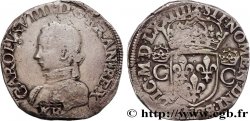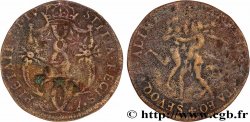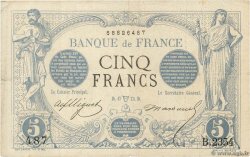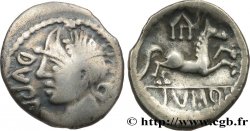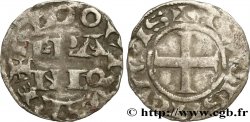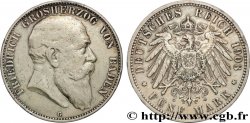fme_989501 - CHARLES IX Médaille de la Saint-Barthélemy
无库存.
所有在网站上销售的产品 (2025)
价格 : 280.00 €
所有在网站上销售的产品 (2025)
价格 : 280.00 €
种类 Médaille de la Saint-Barthélemy
日期: 1572
材质 silver plated bronze
直径 35 mm
模子方针 12 h.
硬币制模工 Alexandre OLIVIER (1568-1607)
重量 24,22 g.
侧面 lisse
印模 sans poinçon
稀少度 R2
关于品相的说明
Coups et rayures sur la tranche. Marques d’usure sur les hauts reliefs. Métal d’aspect légèrement poreux
出版目录中的项代码 :
正面
正面的文字 .VIRTVS. IN - .REBELLES..
正面的说明书 Charles IX vêtu des ornements royaux, tenant de la main droite une épée et de la main gauche la main de justice, assis sur un trône sous un dais; à ses pieds, les corps des huguenots.
背面
背面的文字 (CROISETTE) PIETAS EXCITAVI IVSTITIAM ; À L’EXERGUE 24. AVGVSTI / .1572..
背面的说明书 Écusson aux armes de France surmonté d’une couronne royale, entouré du collier de saint-Michel et flanqué de deux colonnes surmontées chacune d’une couronne de laurier ; sur la base de la colonne de droite, deux tables ; sur la base de la colonne de gauche, le chiffre XII ; le tout est entouré d’une couronne de laurier.
评论
Frappe postérieure.
Concernant la fabrication de cette médaille, voici un extrait de ce que l’on peut lire : “Nicolas Fauyer , " Conseiller du Roy Charles IX et general de ses Monnoyes" et Ce fut le 3 septembre 1572 que Nicolas Fauyer a présenté au roi les projets de ces médailles, et le texte explicatif qu'il en avait fait. Le privilège fut accordé « à Iehan Dallier, marchant libraire en cette ville de Paris, d'imprimer et de faire imprimer l'Exposition des Médailles forgées sur l'oppression des Rebelles». Ce privilège est signé Seguier”.
cf. gallica.bnf.fr/ark:/12148/bpt6k5652761j/texteBrut.
Later strike. Concerning the making of this medal, here is an excerpt from what can be read: “Nicolas Fauyer, \\\"Advisor to King Charles IX and general of his Coins\\\" and It was on September 3, 1572 that Nicolas Fauyer presented to the king the projects of these medals, and the explanatory text that he had made of them. The privilege was granted \\\"to Iehan Dallier, merchant bookseller in this city of Paris, to print and to have printed the Exhibition of Medals forged on the oppression of the Rebels.\\\" This privilege is signed Seguier. cf. gallica.bnf.fr/ark:/12148/bpt6k5652761j/texteBrut
Concernant la fabrication de cette médaille, voici un extrait de ce que l’on peut lire : “Nicolas Fauyer , " Conseiller du Roy Charles IX et general de ses Monnoyes" et Ce fut le 3 septembre 1572 que Nicolas Fauyer a présenté au roi les projets de ces médailles, et le texte explicatif qu'il en avait fait. Le privilège fut accordé « à Iehan Dallier, marchant libraire en cette ville de Paris, d'imprimer et de faire imprimer l'Exposition des Médailles forgées sur l'oppression des Rebelles». Ce privilège est signé Seguier”.
cf. gallica.bnf.fr/ark:/12148/bpt6k5652761j/texteBrut.
Later strike. Concerning the making of this medal, here is an excerpt from what can be read: “Nicolas Fauyer, \\\"Advisor to King Charles IX and general of his Coins\\\" and It was on September 3, 1572 that Nicolas Fauyer presented to the king the projects of these medals, and the explanatory text that he had made of them. The privilege was granted \\\"to Iehan Dallier, merchant bookseller in this city of Paris, to print and to have printed the Exhibition of Medals forged on the oppression of the Rebels.\\\" This privilege is signed Seguier. cf. gallica.bnf.fr/ark:/12148/bpt6k5652761j/texteBrut








 对产品描述纠错
对产品描述纠错 打印
打印 分享我的选择
分享我的选择 提问
提问 Consign / sell
Consign / sell
 产品介绍
产品介绍
